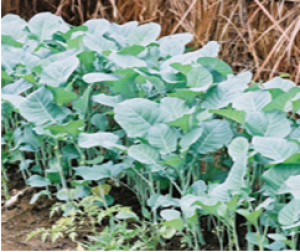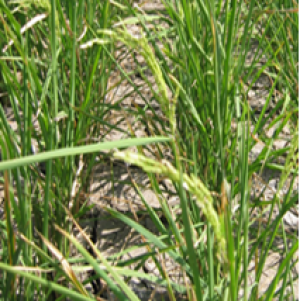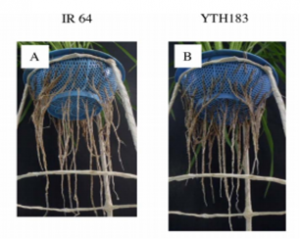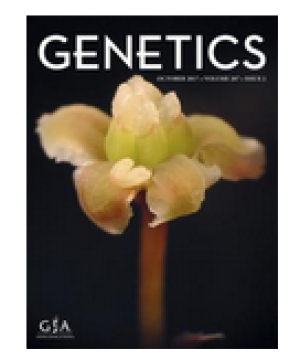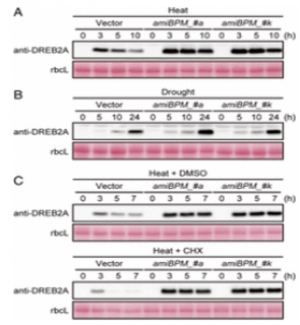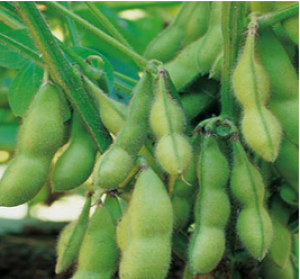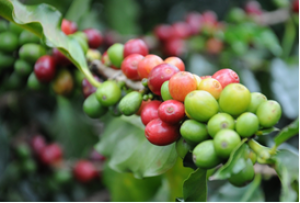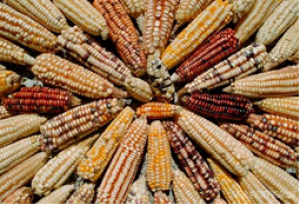A protocol for the induction of site-directed deletions and insertions in the genome of Brassica carinata with CRISPR is described. The construct containing the Cas9 nuclease and the guide RNA (gRNA) was delivered by the hairy root transformation technique, and a successful transformation was monitored by GFP fluorescence. PAGE analysis of an amplified region, presumably containing the deletions and insertions
The AP2/ERF family is a plant-specific transcription factor family whose members have been associated with various developmental processes and stress tolerance. Here, we functionally characterized the drought-inducible OsERF48, a group Ib member of the rice ERF family with four conserved motifs, CMI-1, -2, -3 and -4. A transactivation assay in yeast revealed that the C-terminal CMI-1 motif was essential for OsERF48 transcriptional activity. When OsERF48 was overexpressed in an either a root-specific (ROXOsERF48) or whole-body (OXOsERF48) manner, transgenic plants showed a longer and denser root phenotype compared to the nontransgenic (NT) controls.
Increasing rice production to feed the world ’s growing population will be a signi ficant challenge, particularly in the developing countries where Indica Group cultivars are predominantly grown. Rice genotypes suitable for water-saving conditions are also necessary to cope with current and predicted water scarcities. Here, we report a high-yielding introgression line, YTH183, derived from new-plant-type rice with an Indica Group cultivar (‘ IR64 ′ ) genetic background.
Retrotransposons (RTs) can rapidly increase in copy number due to periodic bursts of transposition. Such bursts are mutagenic and thus potentially deleterious. However, certain transposition-induced gain-of-function or regulatory mutations may be of selective advantage. How an optimal balance between these opposing effects arises is not well characterized.
DEHYDRATION-RESPONSIVE ELEMENT-BINDING PROTEIN 2A (DREB2A) is a key transcription factor for plant adaptation to drought and heat. DREB2A activity is strictly regulated via proteolysis mediated by the negative regulatory domain (NRD), although the molecular basis for this regulation has remained unclear for a decade. We reveal that BTB/POZ AND MATH DOMAIN proteins (BPMs),
Maize is more affected by abiotic stress especially heat stress as compared to other crop plants. In the present study, eight females and four males were crossed in NCD-II design to get 32 hy-brids and these hybrids were evaluated for their combining ability, mode of gene action and association of heat adaptive traits under natural heat stress condition. The combining ability analysis revealed that the predominance of non-additive gene action for heat tolerant traits as GCA/SCA variance ratio was very low except grain yield.
iTRAQ protein profile analysis of developmental dynamics in soybean [Glycine max (L.) Merr.] leaves.
Zao5241 is an elite soybean [Glycine max (L.) Merr.] line and backbone parent. In this study, we employed iTRAQ to analyze the proteomes and protein expression profiles of Zao5241 during leaf development. We identified 1,245 proteins in all experiments, of which only 45 had been previously annotated. Among overlapping proteins between three biological replicates, 598 proteins with 2 unique peptides identified were reliably quantified.
One of the most important crops cultivated around the world is coffee. There are two main cultivated species, Coffea arabica and C. canephora. Both species are difficult to improve through conventional breeding, taking at least 20 years to produce a new cultivar. Biotechnological tools such as genetic transformation, micropropagation and somatic embryogenesis (SE) have been extensively studied in order to provide practical results for coffee improvement.
Here we employ RNA sequencing (RNA-seq) to understand the role that conditions that vary across a landscape may have played in shaping genetic diversity in the maize landraces of Chiapas, Mexico. We collected landraces from three distinct elevational zones and planted them in a midland common garden. Early season leaf tissue was collected for RNA-seq and we performed weighted gene co-expression network analysis (WGCNA). We then used association analysis between landrace co-expression module expression values and environmental parameters of landrace origin to elucidate genes and gene networks potentially shaped by environmental factors along our study gradient.
Sugarcane is the world's most efficient feedstock for commercial production of bioethanol due to its superior biomass production and accumulation of sucrose in stems. Integrating first and second generation ethanol conversion processes will enhance the biofuel yield per unit area by utilizing both sucrose as well as cell wall bound sugars for fermentation. RNAi suppression of the lignin biosynthetic gene caffeic acid O-methyltransferase (COMT) has been demonstrated to improve bioethanol production from lignocellulosic biomass.


 Curently online :
Curently online :
 Total visitors :
Total visitors :
